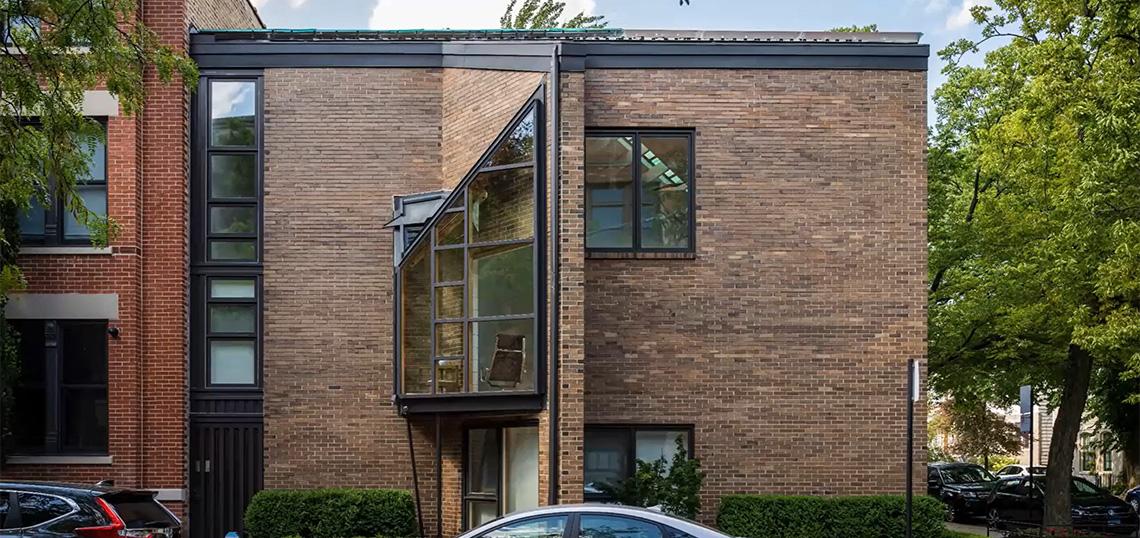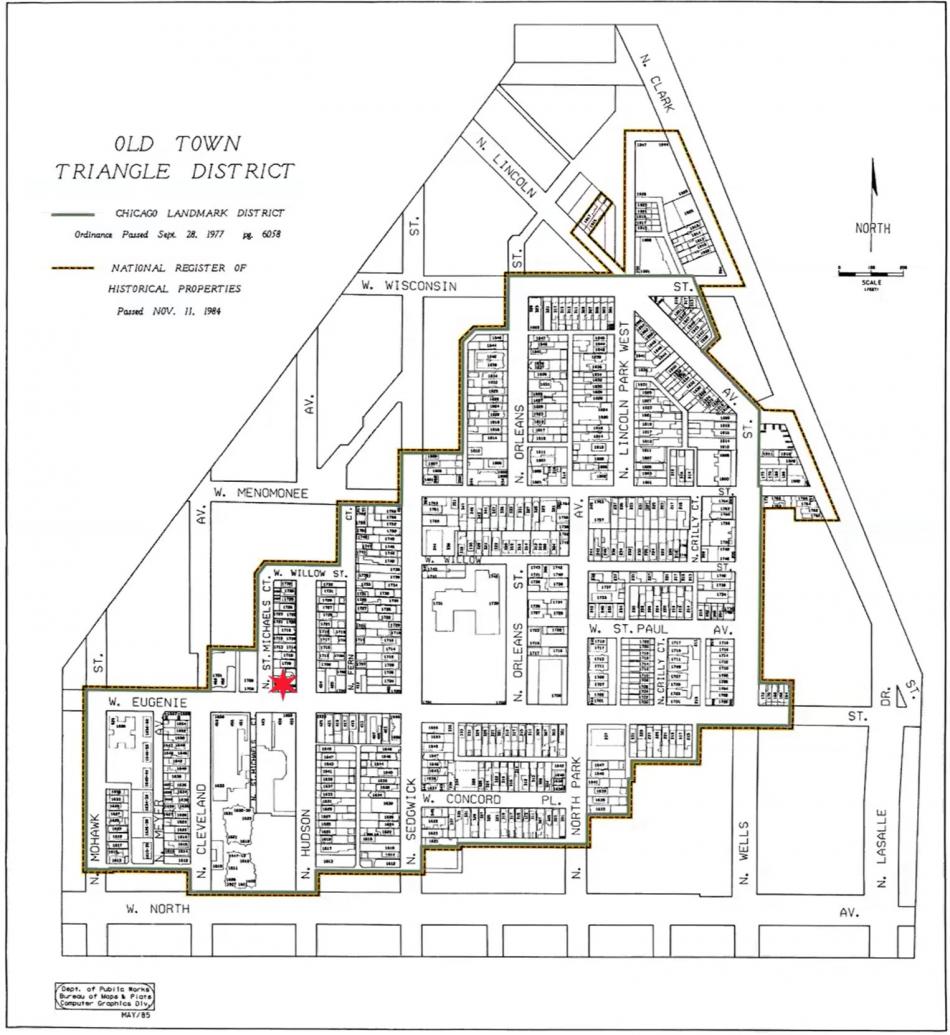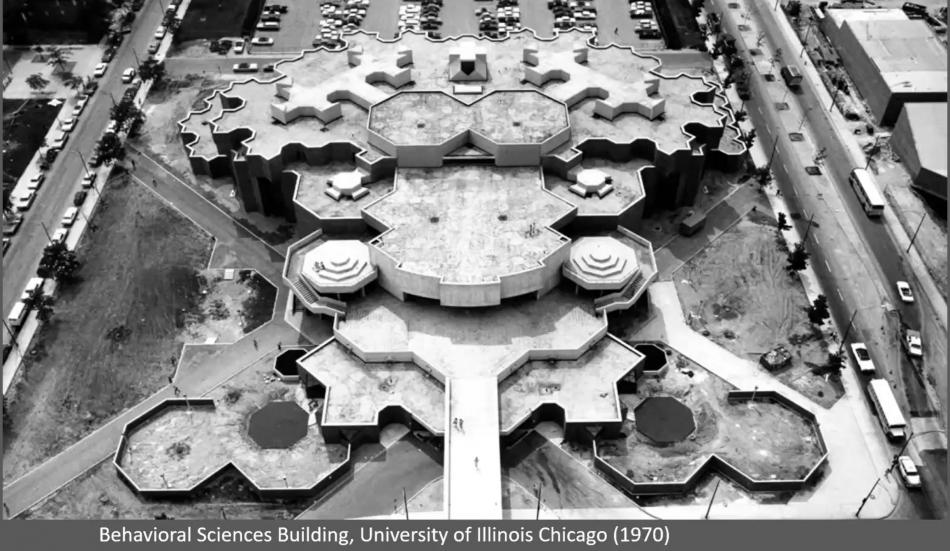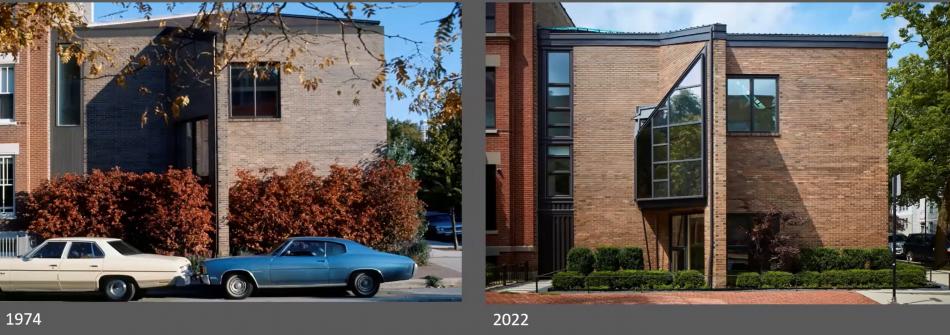The Commission on Chicago Landmarks has approved a preliminary landmark designation for the Netsch House. Located at 1700 N. Hudson, the home was built by Walter Netsch in 1974 for him and his wife Dawn Clark Netsch. The home sits within the Old Town Triangle Historic District although it is currently not listed as a contributing building.
Meeting Criterion 1 for the home’s heritage, the Netsch House was part of a collection of houses built by architects in the 1970s, attracted by the area’s rich cultural context. Established in 1947, the Old Town Triangle Association, which is still active today, supported the artistic character of the neighborhood with its annual art fair. In 1958, the Chicago Tribune called Old Town Triangle Chicago’s Left Bank.
The second criterion the house meets is Criterion 3, for its association with a significant person. Dawn Clark Netsch, the wife of Walter Netsch, lived from 1926 until 2013. She studied politics and law at Northwestern University and was the only and first woman to graduate in her class of 1952. She became the first female faculty there and in 1969 was elected to the Illinois Constitutional Convention. In 1973, she was the first woman elected to the Illinois State Senate and spent 18 years in office. In 1994, she was the first woman to run for governor, although she did not win.
The house also meets Criterion 4 for its status as a piece of exemplary architecture. Designed by Walter Netsch, the home is a clear expression of his own Field Theory. The exterior is restrained, while the interior exhibits the drama of the design. The interior is essentially a 30-foot-tall cube with living spaces arranged as platforms that radiate and spiral up from a center core. The vaulted roof is made up of a frame structure of overlaid squares.
The final criterion is Criterion 5 for its status as a work of a significant architect. Walter Netsch was born and raised in South Shore and received his architectural degree from MIT in 1943. After serving in World War 2, he returned and joined SOM in 1947 where he spent his entire career. Netsch quickly moved up within the firm and was put in charge of high profile projects, establishing a reputation as a skilled planner for large, complex projects. He later developed his philosophy of Field Theory, which was a process of using overlaid grids to produce lattices that were the beginnings of floor plans and elevations. The most complete expression is his master plan at the University of Illinois Chicago and specifically the Behavioral Sciences Building which clearly shows the lattice form and plan arrangement.
The house also meets the separate Integrity Criterion. Walter and Dawn Clark Netsch lived in the home their entire lives and was only passed to new owners after Dawn Clark Netsch died in 2013. During their time in the house, the Netschs added a bay window to the south elevation. More recently, the new owners hired SOM to do a careful restoration and renovation to the house, protecting the design while updating the finishes. The significant features set to be protected include all exterior elevations including rooflines, as well as parts of the interior. Those include the overall spatial volume of the home as well as aspects of Field Theory and materials that are significant including the central tower and arrangement of living spaces.
With the preliminary landmark recommendation approved, the next step for the designation would be a report and final landmark recommendation from the Commission. With that final recommendation, the proposed designation would be submitted to City Hall, voted on by the Committee on Zoning, and ultimately approved by the Chicago City Council.












